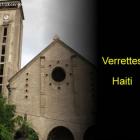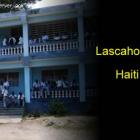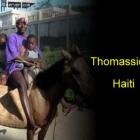ADVERTISEMENT
Acul-du-Nord - Haiti Observer Blog
Acul-du-Nord, Haiti Observer Blog. Read the following articles about Acul-du-Nord
Acul-du-Nord in Nord Department of Haiti
In the country's northern part lies the Nord Department, which is made up of Acul-du-Nord Arrondissement that is composed of three municipalities, namely Acul-du-Nord, Plaine-du-Nord and Milot. The department is home to more than 100,000 Haitians.
The municipality of Acul-du-Nord, often referred to as Akil dinò in Creole. It is divided into six small towns: Bas de l'Acul, Camp Louise, Coupe a David, Grande Ravine, La Soufriere, and Mornet.
Acul-du-Nord is the home of 51,337 Haitians who concentrate on agriculture as their main source of livelihood. The common produce in the municipality are coffee, different kinds of fruits, and rice. Haitians in this region also practice beekeeping for attaining honey and selling this in the local market and in foreign trade. Majority of Acul-du-Nord's population are Roman Catholics due to the introduction of Christianity in the 1600s by Haiti's European colonizers. One of the earliest marks of Christianity in the municipality is the Camp Louise Parish located in the town of Camp Louise, which was built and completed in 1699 by the colony's former governor, Saint Domingue.
Limbe, A Historic Haitian City
Limbé is located in Haiti's Nord Department. In the Limbe Arrondissement, it is a municipality inhabited by 32200 inhabitants as per 2003 census. After Cap Haitien it is the second most important city. Bas-Limbe and Limbe are the two communes which include other seven rural sections. It is located to the north of Haiti's capital, Port-au-Prince at a distance of 220 km. L'Acul-du-Nord, Bas-Limbé, Cap-Haïtien, Port-Margot and Plaisance are the neighboring cities and towns to access from Limbe.
From where does Limbe derives its strength
Limbe city derives its strength and a base of diverse agriculture from the Limbe River. Near the sea in Bas-Limber, rice is produced and in the city's surrounding areas, mango, coffee, banana and fruits of other kinds are produced.
Fete Champetre, Major Cultural Event in Haiti
Tourism has been on a substantial descent over the last 20 years. But one series of events, the Fête champêtre, continues to give hope to a struggling industry as tourists, local, from the Diaspora, and international, flock Haiti to witness the countryside festival.
One of the main avenues for entertainment to the 18th century elite, a Fête champêtre (a country feast or pastoral festival) was a type of garden party much loved at court. With pretensions to simplicity, the Fête champêtre was patronized by the well dressed, entertained by musicians hidden in the trees, as they enjoyed the beauty of landscaped park.
Our objective is to share with you news and information about Haiti and the people of Haiti. Traditions, habits and the way we were or grew are alive in this site. We highly recommend that you Subscribe to our Newsletter and also share with us some of the things that are memorable and made us unique people.

 Black Friday Shopping Season
Black Friday Shopping Season  Verrettes, Haiti
Verrettes, Haiti  Lascahobas, Haiti
Lascahobas, Haiti  Something to think about
Something to think about  Thomassique, Haiti
Thomassique, Haiti